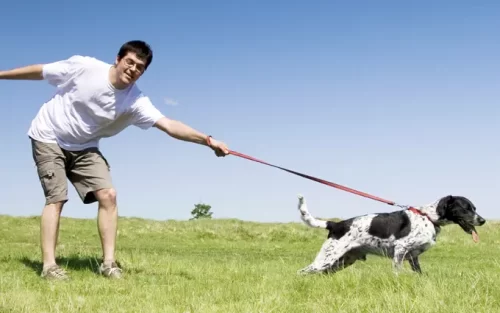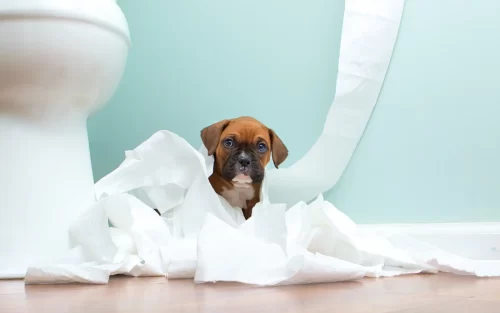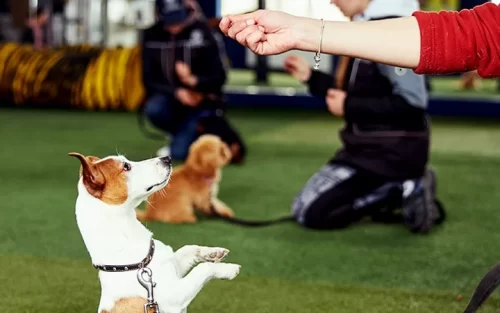Walking your dog should be a relaxing and enjoyable experience for both you and your four-legged friend. But if that peaceful, leisurely stroll is instead a test of strength or a tug-of-war contest, then something’s amiss. Those of us with strong pullers know this all too well! The leash is their domain, and controlling it seems near impossible. Luckily, you’re not alone in this battle and with the right leash training techniques, you can turn your dog into a perfect walking companion. This comprehensive guide is all about improving leash skills for strong pullers, so let’s dive in!
Understanding Why Your Dog Pulls
Firstly, it’s important to understand why your dog might be pulling on the leash. It could be a number of things – from simple excitement to predatory instincts. This article on PetMD gives a lot more insight on the ‘why’ behind the pulling. Understanding these behaviors is key in curbing them.
Choosing the Right Tools
Before you begin any leash training, you’ll need the right tools. Certain types of leashes and harnesses are designed specifically for dogs who pull. You may want to consider something like a no-pull harness or even a head halter. Rover.com offers a great selection of the best no-pull dog harnesses to choose for your pups of different breeds. Remember, the leash isn’t about control – it’s about guidance.
Training with Treats
Your training toolkit wouldn’t be complete without an assortment of high-value treats. Incentivizing good behavior with small, bite-sized rewards can make your leash-training efforts more effective. For delicious and nutritious treat ideas, check out this article by The Dog Bakery.
The Art of Consistent Positive Reinforcements
Positive reinforcement is the cornerstone of any successful dog training routine. This involves rewarding your dog for good behavior, making them more likely to repeat it. When improving leash skills for strong dogs, be consistently rewarding them when they walk without pulling. ASPCA presents a comprehensive guide on positive reinforcement and how to apply it effectively.
The Role of Patience and Consistency
Training takes time and it’s critical not to rush things. Ensuring that you’re patient with your furry friend and consistent with your training can significantly improve their leash skills. Renowned animal behaviorist, Dr. Sophia Yin, covers the importance of this with leash training in her article.
Whether you have a young puppy who has recently discovered the joys of pulling or an older dog startled by the birds, improving leash skills for these strong pullers is absolutely possible. The journey may be long, but with understanding, the right tools, positive reinforcement, consistency, and patience, it is undeniably rewarding.
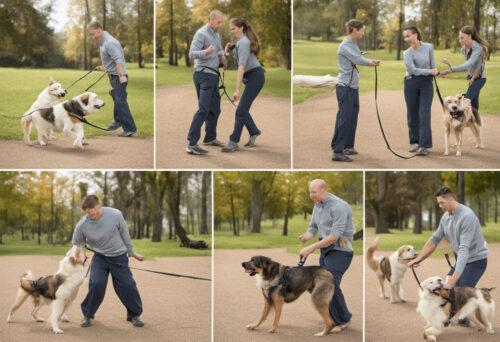
Breaking the Pattern with Strategy Shifts
Beyond proper tools and technique, a strategic shift can lead to a breakthrough in leash manners. Communicating a clear message to your lovable pooch about what is expected when the leash comes on is crucial. Think of the walk as a dialogue between you and your dog, rather than a power struggle. Training expert Karen Pryor shares unique thoughts on shifting strategy to gain leash respect in her write-up.
The Value of Pre-Walk Exercise
Doing some exercise before the walk can also reduce pulling. A pre-walk play session in the yard can help release pent-up energy making the walking exercise calmer. Petplace.com explains how exercise can work wonders in managing dog behavior including leash pulling.
Structured Walk: Routine is King
Establishing a structured walking routine goes a long way to minimize leash pulling. Dogs are creatures of habit and will respond positively to a structured walk where they know what is expected of them. Check out this Dogtopia post on the benefits of a consistent walking routine.
Professional Training Options
While many of these tips and tricks can be implemented at home, never discount the benefit of enlisting the help of professionals. Their expert guidance, experience with tenacious pullers, and arsenal of proven techniques can expedite the process. This list of top online dog training courses from The Spruce Pets provides some great options for those needing extra assistance.
The Power of Persistence: Stick With it!
Last but certainly not least, persistence is key! It might take longer than you expect to improve leash skills but take heart, every little progress is a victory. Dog whisperer Cesar Millan talks about the power of persistence, patience, and positivity in making any training successful.
With these techniques and ideas, your goal of a peaceful walk with your strong puller is well within reach. Harness the power of understanding, patience, persistence, and the right tools and advice, and you’ll transform these pulling challenges into serene strolls. Enjoy better control, shared respect, and a deeper bond with your furry companion.
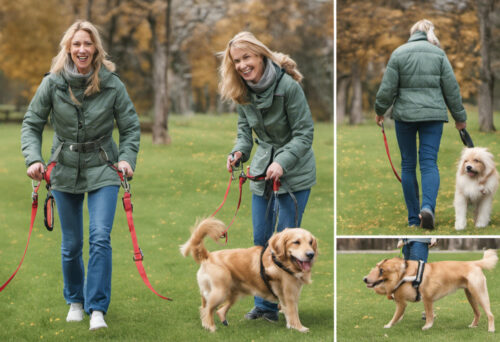
A Partner to Reckon With: Distraction-Free Environment
Often, dogs pull because they’re excited by their stimulating surroundings. By providing a calm and distraction-free environment for training, you’re setting the stage for successful training sessions. The principal behind this is to reduce the presence of triggers that encourage pulling. An article on Preventive Vet outlines the logic behind this approach and provides practical steps you can take to create such an environment.
Balance is Key: Mental Exercise
Just as physical exercise before a walk can reduce pulling, mental stimulation can equally tire out your dog and make training easier. There are plenty of mind-challenging games and activities you can use to exercise your dog’s brain and make them more attentive. Here are some brain-teasing games suggested by PetGuide that you can try with your dog.
Engage the Senses: Introduce New Scents
Another great tactic to distract your dog from pulling is through the introduction of new scents during your walk. Whether it’s a new walking route or a scented toy, these new stimuli can distract your dog from pulling and make the walks more enjoyable. Need some inspiration? PuppyLeaks shares ingenious ways to introduce new smells to your dog.
Skill Development: Teaching Commands
Teaching your dog specific commands like ‘slow’, ‘stop’ or ‘heel’ can be invaluable in improving their leash skills. Following these commands also gives direction to your furry friend, making walks more structured. The renowned online dog-training platform, Dog Training Nation provides a superb guide on how to train your dog on these commands effectively.
Put Time on Your Side: Shorter Frequent Walks
Another pro-tip to consider in your quest for improved leash manners is the duration of the walks. Power-packed, shorter, but more frequent walks can be more beneficial in teaching your dog not to pull. This helps to ensure that your training sessions stay enjoyable and do not become exhausting for either party. Dogtopia explains the rationale and benefits behind shorter walks.
Embrace the Journey: Celebrate Small Wins
Remember, progress may be slow but it is still progress. Celebrating small victories like a few steps without pulling or mastering a new command is crucial for boosting both your spirits and your dog’s motivation. This positive mentality is strongly advocated by Paws in their training guidelines.
To conclude, this journey to improve leash skills for strong pullers is certainly not an overnight task. However, with a toolbox packed with patience, persistence, positive reinforcement, proper tools, strategy shifts, structure, and professional guidance, the goal of an effortless walk with your strong puller is certainly achievable. Before you know it, you’ll not only have a far more enjoyable walking experience but a stronger bond with your pet. Happy training!

